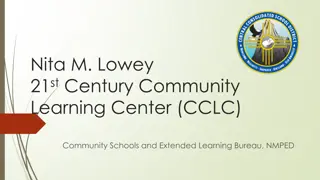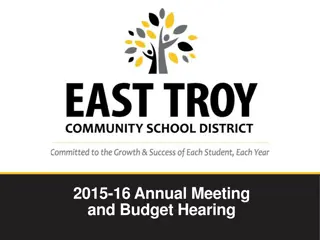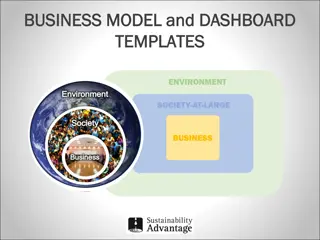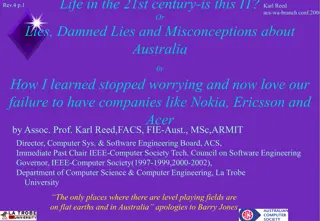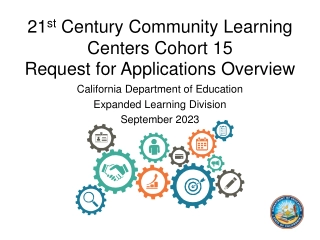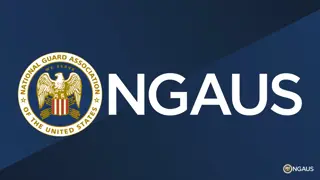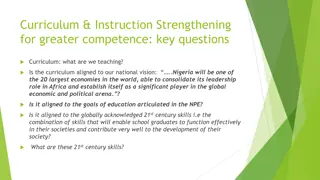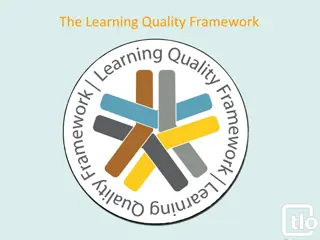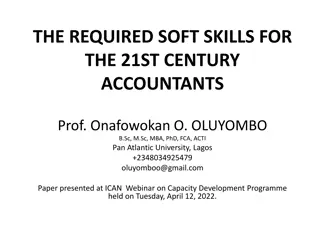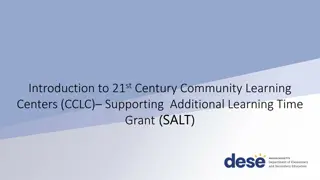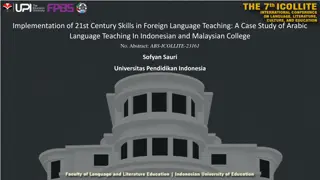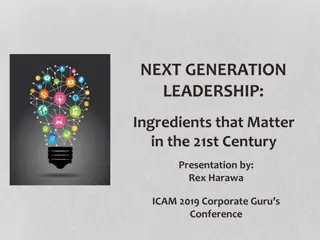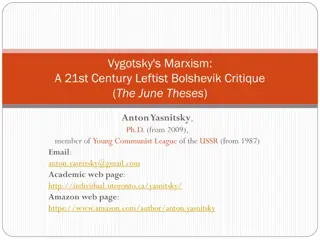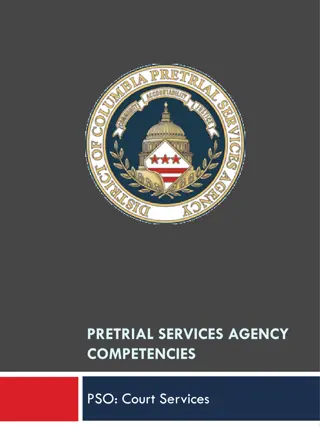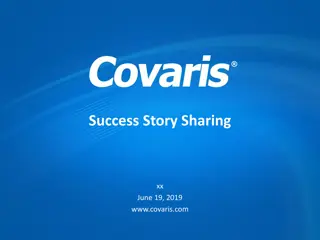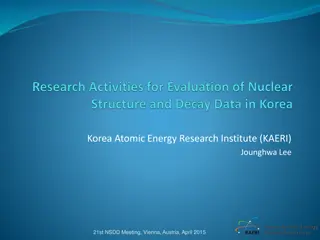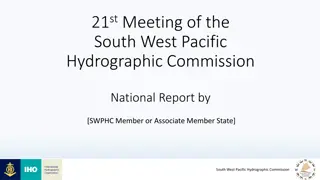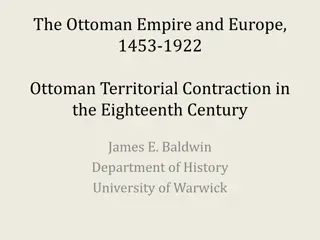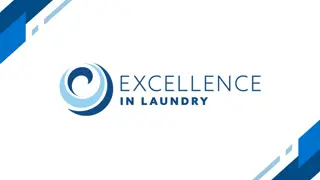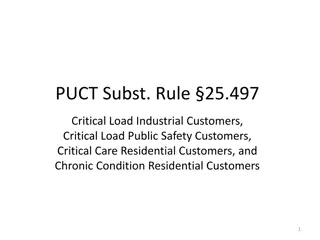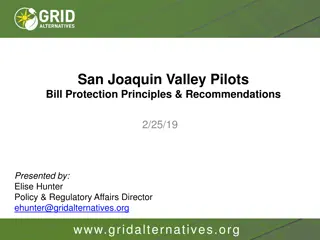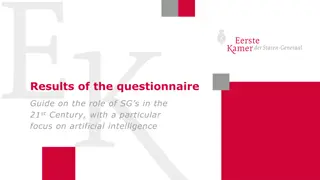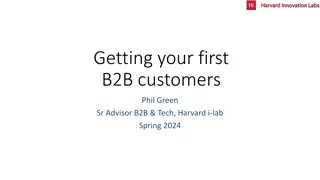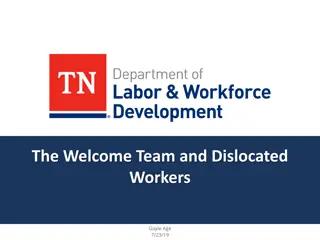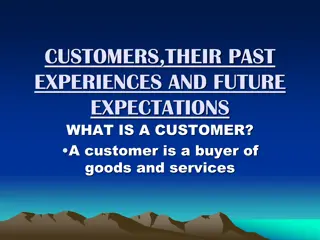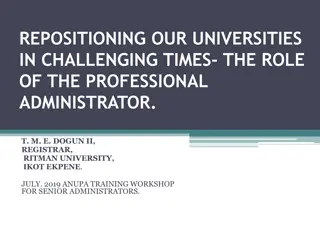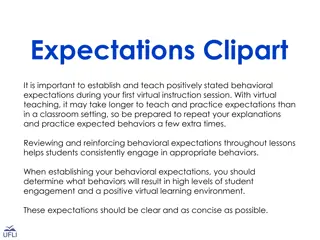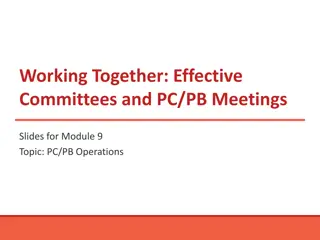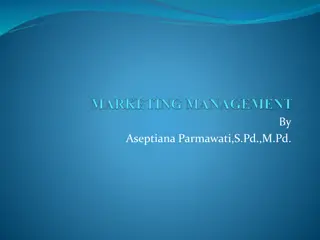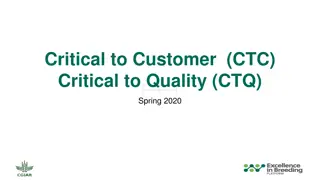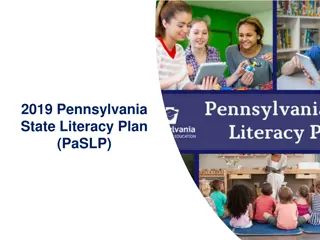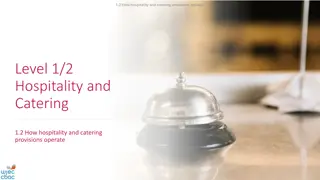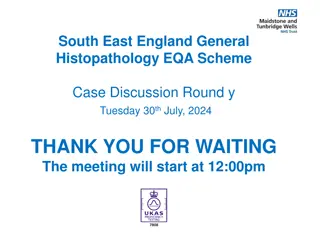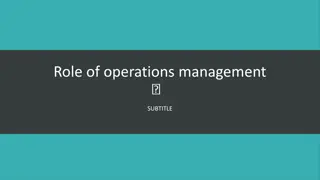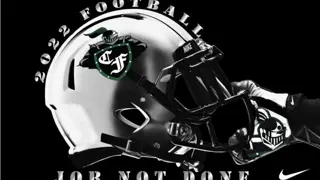Meeting Customers' Needs and Expectations in 21st Century Operations
The meeting focuses on discussing challenges in the transportation environment and customer expectations. It emphasizes the importance of integrating operations into the DOT's program. Operations strategies such as work zone management, traffic incident management, and transit management are highlighted. The changing transportation landscape includes increased reliance on technology, evolving customer needs, and emphasis on measuring performance, amidst reduced financial resources. Technology advancements are transforming the industry, offering opportunities for innovation and improved efficiency.
Download Presentation

Please find below an Image/Link to download the presentation.
The content on the website is provided AS IS for your information and personal use only. It may not be sold, licensed, or shared on other websites without obtaining consent from the author. Download presentation by click this link. If you encounter any issues during the download, it is possible that the publisher has removed the file from their server.
E N D
Presentation Transcript
Operations in the 21st Century DOT Meeting Customers Needs and Expectations 1
Purpose of this Meeting: Share Thoughts & Discuss Challenges brought about by the changing transportation environment and public (i.e., customer ) expectations How operations and supporting technologies can help address these issues Importance of mainstreaming operations into the DOT s program (and the transportation planning process) 2
What is Operations? Transportation Systems Management and Operations (TSMO, TSM&O) Defined in MAP 21 Integrated strategies to optimize the performance of existing infrastructure through the implementation of multimodal and intermodal, cross-jurisdictional systems, services, and projects Supported and enabled by Intelligent Transportation System (ITS) technologies 3
Example Operations Strategies and Solutions Work Zone Management Traffic Incident Management Service Patrols Special Event Management Road Weather Management Transit Management Freight Management Traffic Signal Coordination Traveler Information Ramp Management Managed Lanes Active Traffic Management Integrated Corridor Management 4
The Transportation Environment is Changing Increased reliance on information and technology Increasing customer needs and expectations Growing emphasis on measuring performance Reduced financial resources Technology also offers opportunities multiple operations strategies and regional integration of various modes 5
Technology is Transforming Our World Increased availability of information o Internet connectivity, wireless communications, cloud computing o Information is available 24/7 on mobile devices Shifting customers expectations: technology can improve efficiency and service The future even more innovative technologies and a shorter shelf life o New data services o Connected / autonomous vehicles From 511SF website 6
Customer Expectations and Needs are Changing Public s expectations of government o Increased productivity and efficiency o Greater demand for accountability value expected from the use of tax and toll dollars Improved performance and service for commuter, freight, recreational, and other trips o Mobility, including reduced delays and congestion o Safety o Accurate, timely, and accessible information o Reliability (a focus of SHRP2 program) 7
Performance Measures Element of Increased Accountability The game gets serious when you start to keep score! Emphasized in MAP 21 Goals and associated measures being established for: Safety Infrastructure Condition Congestion Reduction System Reliability Freight Movement and Economic Vitality Environmental Sustainability Reduced Project Delivery Delays 8
Increasing Financial Constraints Decreasing fuel tax revenues going into Trust Fund No change in the federal gas tax since 1993 o Predictions that fund will become insolvent soon Increased fuel efficiency o New CAFE standards o Emerging fleet of electric vehicles and plug-in hybrids pay no fuel tax MUST DO MORE WITH LESS Average Sales Weighted Miles Per Gallon 2008 - 2014 9
Operations Can Help Address These Challenges Leverage Technology Preserve and maximize existing capacity Enhance safety Promote mobility and customer outreach Improve reliability for commuters and freight Manage bottlenecks Monitor performance Implement quickly at relatively low cost 10
Traditional Approach to Managing Transportation Predict future (long-range) traffic volumes Fund major capital projects to provide additional capacity This only addresses 40% of the congestion problem. Also becoming more and more difficult to provide new capacity Causes of Congestion (Source: FHWA, 2005) 11
Benefits from Operations Some Specific Operations Examples 12
Work Zone Management Several strategies and technologies are available. Traveler information & portable DMS (delays, alternate routes) Variable speed limits Automated speed detectors, warning signs & enforcement Dynamic lane merge systems Maintenance decision support Demonstrated benefits include: Reduced crashes Reduced work zone traffic Reduced delays
Traffic Incident Management (TIM) Planned and coordinated process to detect, respond and clear incidents and crashes quickly and safely Multi-disciplinary activity involving DOTs & emergency service providers TIM reduces the duration of traffic incidents (30%-50%) o Reduces congestion o Improves reliability o Improves safety - reduces secondary crashes
Safety Service Patrols and Incident Response Truck Part of TIM Program Provides specially equipped response trucks and trained operators Assists stranded motorists and clearing debris Provides traffic control during traffic incidents Example Benefits Cleared 80% of incidents within 10 minutes Average Benefit/Cost Ratio of 12.4:1 Favorable public response 15
Planned Special Event Management Effective event management requires agency collaboration and coordination Planning and protocols Day-of-event activities Post-event activities Benefits: Reduced delays to motorists attending (and not attending) the event Reduced demand Improved safety 16
Road Weather Management Reduces the impact of adverse weather conditions on travelers Data collection Data assimilation and analysis Information dissemination Example Benefits Low visibility warning system. o Crash rates during fog conditions reduced 70% 100% Wet pavement detection & advisory system reduced crashes by 39% B/C ratio for automated wind advisory in Oregon = 4:1 and 22:1
Emergency Management Large-scale impacts o Severe weather o Homeland security Can happen anytime, often without warning Transportation operations is critical to effective response o Whether transportation infrastructure is affected or not o Prior, during, & following event o Multi-agency planning and coordination a must
Traffic Signal Synchronization Timing adjacent traffic signals to minimize stops Can be based on time of day, traffic flows, special events Example Benefits Reductions in traffic delay ranging from 15% - 40% Reductions in travel time up to 25% Very high benefit cost ratios, sometimes exceeding 50:1 In the 2012 National Traffic Signal Report Card, operators gave themselves an overall grade of D+.
Traveler Information 511 Web and Voice Dynamic message signs (DMS) Radio and television traffic reports SmartPhone apps Social media tools Commercial traffic conditions and prediction services Services may be provided by private sector. Example Benefits 511 customer satisfaction of 68% - 92% Route-specific travel times: 5% -13% increase in on-time performance (i.e., reliability)
Ramp Management Metering - traffic signals on ramps to dynamically control the rate at which vehicles enter a freeway Smoothes the flow of traffic onto the mainline Example Benefits Metering increases freeway throughput 13% - 26% Metering decreases crashes 15% - 43% Greatest benefits occur when applied corridor-wide.
Active Transportation and Demand Management (ATDM) Broad operational philosophy an integrated approach for dynamically and pro-actively managing and influencing travel demand and traffic flow Uses a combination of the real-time operational strategies: Those previously noted Managed Lanes Active Traffic Management Integrated Corridor Management Dynamic pricing
Connected Vehicles and the Future Vehicles reading the roadway and one another Collisions reduced; reliability improved Smarter operational decisions (possibly predictive) The Future? Technology transformation changes mobility What might be the impact of autonomous vehicles? DOT role in supporting development
Reaching Full Potential of Operations Full potential is notprimarily a technology issue or knowledge of best operations practices. The key: Put in place and manage specific supportive business and technical processes and supporting institutional arrangements. Mainstreaming Operations Necessary at agency and regional level Per MAP 21: State DOTs and MPOs must consider projects and strategies as part of their planning process that promote efficient operations 24
Key Leadership Questions for Mainstreaming Operations What are your customers needs and expectations? What are your current business processes for operations (e.g., who is responsible)? Where are you today? Where do you want and need to go? How are you going to get there? Each DOT will have unique challenges and opportunities. 25
Mainstreaming Operations Consider organizational issues and relationships Focus on supporting business and technical processes within the agency Define what constitutes an effective program Mutual Benefits Including operations in the Highway Safety Improvement Program, Congestion Management Process, Asset Management Plan, etc. 26
Critical Dimensions for Improved Operations in a DOT All (6) dimensions are: o Essential o Interrelated Require executive support and leadership Support continuous improvement of operations and reliability
Operations Capability Dimensions Business Processes Planning and programming Budgeting (resources) Systems and Technology Use of systems engineering Systems architectures Standards and interoperability Performance Defining measures Data acquisition and analytics Presentation (internal and external) 28
Operations Capability Dimensions (continued) Culture Leadership Outreach Program legal authority Technical understanding Collaboration Relationships and partnering: Within DOT Among levels of government Public safety agencies MPOs Private sector Organization / Staffing Programmatic status Organizational structure Staff development and retention 29
Regional Operations Collaboration Planning for Operations Multi-modal collaboration between agencies and jurisdictions Collaboration between planners and operators Specific outcomes and regional objectives Investments prioritized to achieve operations objectives Demonstrated accountability through performance measures Objectives-Driven, Performance-Based Approach 31
Objectives-Driven, Performance- Based Approach 32
A New Source of Information on TSM&O National Operations Center of Excellence Partnership of AASHTO, ITE, and ITS America with support from the FHWA. Offers a document library, peer exchanges, webinars, on- call assistance, assessments, and other TSM&O support via the Operations Technical Services Program. o A place to share information as well as receive it. www.transportationops.org 33
Summary Operations is a critical component for managing the transportation network on a daily basis. o Preserves and maximizes existing capacity. o Enhances mobility, reliability, safety, and environment. o Provides customer service via a performance-based approach. o Achieves quick and cost-effective implementation. To be successful, operations needs to be mainstreamed into the agency's institutional and organizational framework. You have an important role to play. 34
Next Steps Demonstrate commitment and involvement at the top level. Empower the people who can make it happen and give them the resources they need. Provide top-down direction and insist on bottom-up accountability. If you need assistance Contact: FHWA: Steve Clinger - Stephen.Clinger@dot.gov AASHTO: Gummada Murthy - gmurthy@aashto.org 35
Questions? 36
What is Reliability? Consistency or dependability in travel times o As measured from day to day, or across different times of day Less tolerance for unexpected delays Planning for travel variability as costs for users, including individuals, transit operators, freight and their end users 38
Managed Lanes Lane(s) where use is based on: Vehicle type / eligibility Pricing Access control Examples: HOV lanes HOT lanes Bus-only lanes Express toll lanes Demand and capacity managed on a pro-active basis Price Eligibility requirements In Minneapolis (HOV lanes converted to HOT lanes) Peak hour corridor throughput increased 5% No change / slight increase in speeds General reduction in speed differentials (HOT/GP lanes)
Active Traffic Management (ATM) Dynamically manage congestion based on prevailing traffic conditions Dynamic speed displays Dynamic lane control Queue warning Dynamic shoulder running Relatively new to US - European Experience Throughput increased by 3% - 7% Decrease in incidents by 3% - 30% Emissions decreased 2% - 8% Benefit / Cost ratio of 3.9 : 1
Integrated Corridor Management Corridors offer opportunities to optimize the entire system. ICM is the operational coordination of multiple transportation networks and cross-network links. Integrated traveler info Operational efficiency of network junctions Cross-network route & modal shifts Capacity and demand Example Benefits ICM along I-15 in San Diego: estimated B/C ratio of 9.7:1 Simulation of ICM: B/C ratios of 7.1:1 to 25.1:1 41


